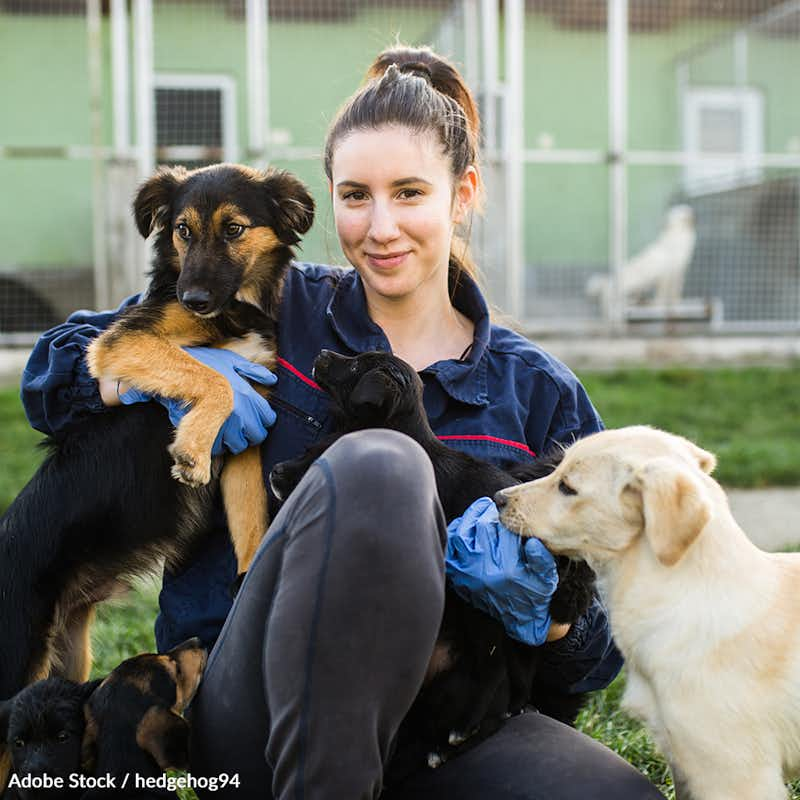Rescue Pets Face Euthanasia — Support Shelters in Desperate Need
14,604 signatures toward our 30,000 Goal
Sponsor: The Animal Rescue Site
Help relieve overcrowded shelters and save lives by taking steps to be a more responsible pet parent and bring down the homeless pet population!

Shelters across the United States do important work of keeping animals off the streets. But many of those shelters are filled to capacity and must turn animals away.
Over 6 million dogs and cats are put in shelters every year. Hundreds of thousands of them don’t make it out alive1.
Early on during the pandemic, shelters saw record adoptions. However, people who now are returning to the office and taking long-awaited vacations are surrendering those pandemic pets2.
At the same time, many shelters helping dogs, cats, rabbits, and other pets in need have been hurt by staffing shortages—resulting in reduced operations, fewer animal intakes, and fewer major adoption events3.
The pandemic has also broken key links in the transport chain that takes animals from the streets to their new homes.
“You’re not providing the service that you used to be able to provide. And in our terms, that means getting animals out of the shelter alive,” said Julie Castle, the CEO of Best Friends Animal Society, an organization that keeps track of euthanization data across the U.S4.
A survey by Best Friends Animal Society found that 87% of 187 U.S. shelters polled were understaffed5. Coupled with a shortage of veterinarians in the U.S, these conditions are putting serious pressure on underserved communities like those in rural areas. Spay and neuter services in many U.S. regions were ruled non-essential during the pandemic, further extending the backlog of animals that must be treated before they can go to families.
The spay-neuter backlog prevents shelters from getting animals ready as efficiently. Hundreds of thousands of animals will face euthanization this year if action is not taken to find them foster or forever homes, or move them to no-kill shelters.
It is not only possible for individuals like you to help being shelter pet euthanization rates down by taking action, it is also the most humane solution to these unnecessary deaths6. Thanks to efforts from caring people like you, a growing number of communities around the nation have even gained the “no kill” classification by achieving a 90% live release rate at their municipal shelters7.
There several other ways you can help your community reach the same level of care for animals. Learn them below and sign the Pledge to Support Shelter Pets!
- American Society for the Prevention of Cruelty to Animals (2022), "Pet Statistics."
- Chris Morris, Fortune (26 June 2021), "People are abandoning their pandemic pets nationwide as returns to work loom."
- Natasha Daly, National Geographic (7 September 2021), "Why animal shelters are facing a new crisis."
- Austin Westfall, Fox News (16 August 2022), "Overcrowded animal shelters dealing with staffing shortages."
- Best Friends Animal Society (2022), "Staffing Shortage Survey Data."
- Oklahoma Animal Alliance (2022), "5 Things You Can Do To Reduce Pet Overpopulation."
- Best Friends Animal Society (2022), "What no-kill really means."
The Pledge:
As an advocate for a every shelter pet's right to a happy and healthy life, I pledge to:
5. Spay and Neuter My Pet
Spaying and neutering your pets will reduce the number of animals that enter municipal shelters by reducing the number of unwanted pets. It also prevents undesirable behavior and health risks which can shorten your pet's life.
4. Adopt, Don't Shop
When you adopt a pet from a shelter, you also make space for another animal, saving two lives in the process. You can typically find any breed of dog at an animal shelter, many who have already been house-trained. The Humane Society of the United States estimates that 25% of the dogs that enter shelters are pure bred and there are breed specific rescues for every type of dog imaginable.
3. Support Flights to Freedom
Greater Good Charities supports Drives to Freedom and Flights to Freedom, transporting dozens of pets out of overcrowded shelters and driving them to shelters with room, where they will quickly be adopted into loving homes.
Most of these are at-risk pets and without this opportunity, might never find their forever homes because of the overcrowding that often happens in shelters during the cold winter months. You can help caravan these pets into new loving homes AND keep them happy and healthy during their shelter stay by covering the cost of a trip for $5.
2. Spread the Word
Informing your community can lead to a much bigger impact than one individual can accomplish alone.
Share facts about shelter pet euthanization rates, and the importance of adopting animals from shelters. Share what you have learned about the shelter pet overpopulation crisis with your friends and loved ones, and explain how their personal actions can help change the situation.
1. Be a Responsible Pet Owner
Owning or fostering a pet is as much a privilege as it is a responsibility. When you bring a pet into your home, you are making a promise to provide for its needs.
Along with providing food, shelter, exercise and loving attention, always make sure your pet has proper identification in case it is lost.
Life events like divorce, the birth of a child or moving can have an impact on this situation. If you are put in a place where you can no longer care for your pet, it is important to make the humane decision and rehome the animal with another loving human, foster parent or a no-kill shelter.
Pledged by,